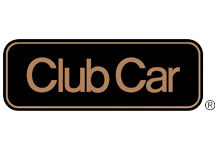A few years ago, there was a rush in the battery industry to be the first to have a Lithium-ion battery product for golf cars. This made for an abundance of batteries that quickly flooded the market. On the surface, many seem like they are the same, but lithium cell type and mechanical configuration make a difference in the battery’s overall quality.
For the golf car owner wanting to switch to a lithium chemistry, it’s important to know that battery manufacturers utilize a variety of cell designs and construction that differ from one another. Therefore, to make a wise choice and proper battery comparison, it’s important to understand what goes into a lithium battery, such as the different cell types, configurations, and construction.
48V CELL COMPARISONS
The popular trend is to use a single 48V lithium golf car battery, and are often found with 60–105 amp hour (Ah) ratings. The differences begin with some battery manufacturers choosing to use cylindrical cells, primarily due to cost and availability. A cylindrical cell is similar in size and shape as a AA battery. Creating a golf car battery typically requires welding hundreds of these individuals cells in series/parallel to achieve the required voltage and capacity. The other popular type of cell is the prismatic cell, which resembles a small book or stack of index cards. For example, manufacturers such as U.S. Battery, only use prismatic LFP cells in its Essential Li batteries, which are larger individually and contain more energy per cell than cylindrical cells. Therefore, fewer are needed to achieve the capacity to power a golf car. In the 48-volt Essential Li products, just 16 cells are connected in series using thick high quality materials. This creates a more robust mechanical design, allows for better thermal performance, and improves cell balancing control.
How these cells are welded also makes a difference in reliability and performance. Manufacturers using prismatic cells typically connect them using laser welds for precision and consistency. This provides high shock and vibration resistance, which makes a difference when your golf car runs over rocky or uneven terrain. By comparison, lithium batteries using cylindrical cells often have small spot weld connections with limited contact area. This can make them susceptible to detachment from consistent vehicle vibrations. The thickness of material used to weld cells also matters, with some manufacturers using very thin metal sheets to connect the cylindrical cells, making them susceptible to heating which can impact battery life. The thick connections used for prismatic cells are great for high amp loads, often seen when climbing hills or hauling loads.
If your goal is to take advantage of lithium deep-cycle battery technology safely, it’s important to ask your battery dealer about battery construction. If they are unfamiliar or can’t get you that information, research the battery info from manufacturer’s websites. Then ask your dealer about the differences between battery brands and look for those that provide the highest quality and reliability for your money. For more information on lithium battery cell types and construction, for your golf car, visit www.usbattery.com






















